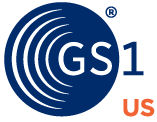RFID technology has been used in the apparel and general merchandise space for years, and Decathlon, a global sporting goods retailer, was a forerunner. Today, 100% of Decathlon products carry an RFID tag that powers operations, extending from its production lines to its checkout lines.
Accurately tracking the availability of products was the original impetus behind Decathlon’s investments in RFID. Missed sales were having an impact on both revenue and customer satisfaction, but with RFID, Decathlon was able to better track their inventory—and do it quicker.
Before RFID, staff members would confirm whether a product was labeled correctly by scanning the barcode and then entering the data into a database. The whole process took about 12 seconds per item. RFID simplified this procedure and shortened the entire process to less than three seconds. Using a handheld reader or racket, the accuracy of sorting was also greatly improved.
Although the difference between the two operations at first glance is less than 10 seconds, when you calculate the thousands of times this activity occurs worldwide, the time savings are huge.


$&dpr=off)






